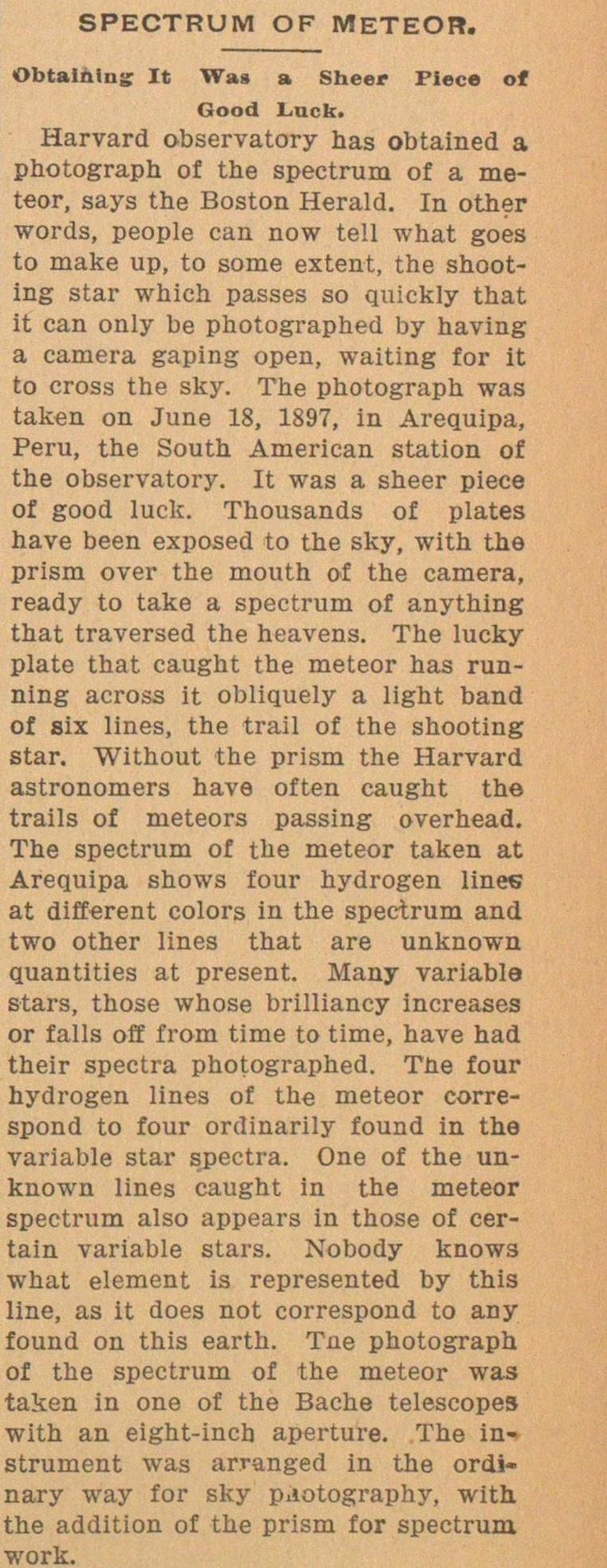Spectrum Of Meteor

Harvard observatory has obtained a photograph of the spectrum of a meteor, says the Boston Herald. ín other words, people can now tell what goes to make up, to some extent, the shooting star which passes so quickly that it can only be photographed by having a camera gaping open, waiting for it to cross the sky. The photograph was takn on June 18, 1897, in Arequipa, Peru, the South American station of the observatory. It was a sheer piece of good luck. Thousands of plates have been exposed to the sky, with the prism over the mouth of the camera, ready to take a spectrum of anything that traversed the heavens. The lucky plate that caught the meteor has running across it obliquely a light band of six lines, the trail of the shooting star. Without the prism the Harvard astronomers have often caught the trails of meteors passing overhead. The spectrum of the meteor taken at Arequipa shows four hydrogen lines at different colors in the spectrum and two other lines that are unknown quantities at present. Many variable stars, those whose brilliancy increases or falls off from time to time, have had their spectra photographed. The four hydrogen lines of the meteor correspond to four ordinarily found in the variable star spectra. One of the unknown lines caught in the meteor spectrum also appears in those of certain variable stars. Nobody knows what element is represented by this line, as it does not correspond to any found on this earth. Tne photograph of the spectrum of the meteor was taken in one of the Bache telescopes with an eight-incb aperture. The instrument was arranged in the ordinary way for sky pjotography, with. the addition of the prism for spectrum work.
Article
Subjects
Old News
Ann Arbor Democrat